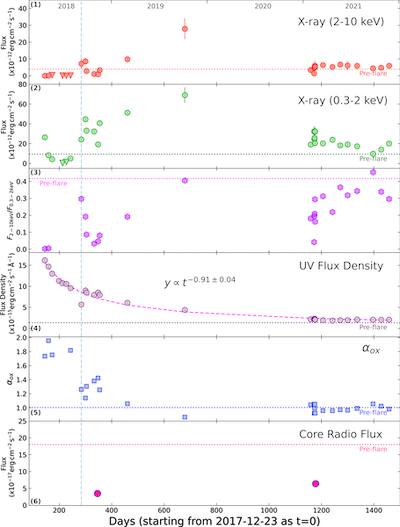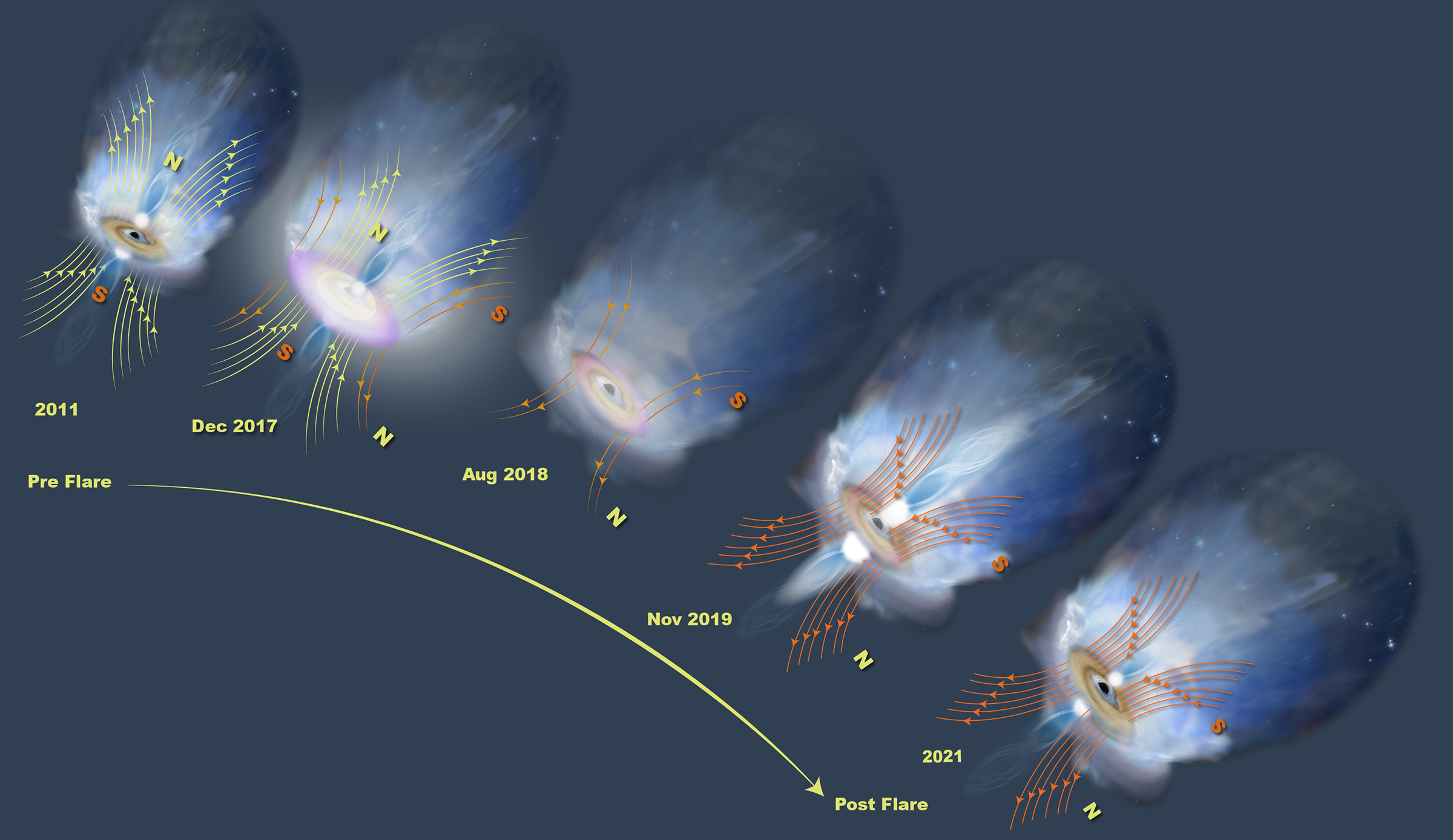
Potential magnetic pole inversion in a changing look Active Galactic Nuclei
by Sibasish Laha (NASA Goddard Space Flight Center, USA) on behalf of co-authors of the paper

parameters of the central engine of the AGN
1ES1927+654, as observed by Swift, VLBI and VLBA.
Recent discoveries of so-called changing-look AGN (CL-AGN), have given us a rare view of extreme changes in the AGN state spanning a few months to years, which may give insight into major open questions about the nature of AGN fueling. CL-AGN are rare, with only a few dozen candidates in the literature. One of the most dramatic cases is 1ES 1927+654, a nearby (74.2 Mpc) and previously well-studied type 2 AGN which was observed to undergo a dramatic optical outburst beginning in December 2017. In this work (Laha et al., 2022) we report the evolution of the radio, optical, UV and X-rays from the pre-flare state through mid-2021 with a suite of new and archival multiwavelength observations, including archival EVN and new VLBA observations.
During the outburst of 1ES 1927+654 which peaked in March 2018, the optical and UV fluxes increased by four magnitudes, and broad emission lines newly appeared for the first time in the optical/UV. By July 2018 the X-ray coronal emission (2 − 10 keV) had completely vanished, only to reappear a few months later in October 2018. Interestingly, the optical and UV emission dropped monotonically after the peak in 2018, following a power-law with t−0.91±0.04 (See Figure 1). After around 1200 days since the start of the flare, the UV and X-rays reached their pre-flare values (as observed in 2011). New and archival VLBI observations spanning this period show that the core radio flux (at ≤ 1pc scale) was at its minimum at the time when the X-ray emission was also at a minimum.
Although the initial papers (Trakhtenbrot et al., 2019; Ricci et al., 2020) reporting this unique event suspected a TDE as the source of the CL event due to the power-law decay signature, our multiwavelength observations spanning a period from pre- to post-flare states suggest otherwise. Clearly the event was triggered by a sudden change in the accretion rate. But what made the accretion rate change? We conjecture that it could be a unique case of magnetic polarity inversion in the accretion disk surrounding the SMBH (Scepi et al., 2021), see Figure 2. We see a similar phenomenon in the Sun every 11 years.
The uncorrelated evolution of the optical/UV and X-ray suggests that two separate physical parameters are changing during this event. We suggest that the optical/UV are related to a change in the mass accretion rate at some large radii, Ṁ(ropt), and that the X-rays come from very close to the black hole and are related to a change in the magnetic flux onto the black hole, ΦBH.
One of the most crucial observations supporting our conjecture is the dip in the core-radio flux, occurring nearly at the same time as that of the X-ray dip, favoring the flux inversion scenario.

Published in Laha et al 2022 ApJ 931 5